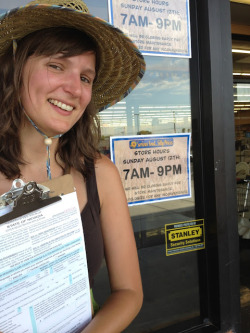Hispanics account for more than half of the U.S. population growth between 2000 and 2010, according to the U.S. Census. Yet, Ellie Terry’s Hispanic students at the High School of Telecommunication Arts & Technology in Brooklyn showed no interest in the upcoming presidential election. She designed a Fund for Teachers fellowship to engage them and fuel a real-world AP Statistics project at the same time.
“Sunset Park, my school’s neighborhood, is predominantly Hispanic. Few residents are politically active and my students felt that the presidential election didn’t involve them,” explained Ellie. “I wanted them to realize that, as Hispanic Americans, they make up the most empowered group of voters. Being a math teacher, I decided to use numbers to prove it.”
On her fellowship, she joined presidential campaign statisticians in the predominantly Hispanic swing states of Florida, New Mexico, Nevada, and Colorado to learn how they use statistical methods to research voter trends. She studied the design of surveys, conducted focus groups, and polled people by phone and in front of Walmart to gather data on Hispanic voters and their concerns. Political strategists used this information to craft candidates’ speeches; Ellie took the results back to Brooklyn to create math and civics lessons.
“The whole school is adopting Common Core State Standards, so I’m enlisting teachers from every discipline to join a three-day election project: History teachers will introduce students to the electoral college; science teachers will review candidates’ positions on the environment and health care; English teachers will show previous debates and assign students a side to argue,” Ellie explained.
Both her fellowship and the cross-curricular unit lead up to a school-wide mock election in November. Additionally, with permission from the board of elections in Kings County and assistance from 17 student teachers from Brooklyn College, 34 AP Statistics students will canvass polling places on Election Day. Students will collect data using class-designed exit surveys that will fuel their coursework for the rest of the school year.
“I feel as though I’ve earned a Master’s degree in statistical analysis after this fellowship. My mom was a teacher, as was her mom and her mom. I’ll be a teacher for life, but finding this type of enrichment is key to keeping me excited and my students informed.” You can read more about Ellie’s fellowship at hstatistics.blogspot.com.
